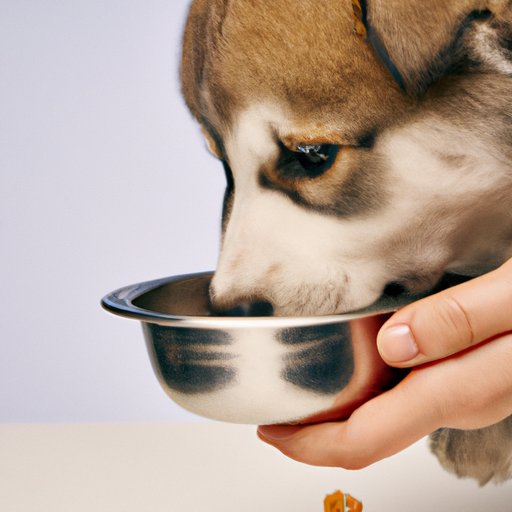Introduction
Getting a puppy is an exciting time for any pet owner, but it also comes with its own set of challenges. One of the most common issues new puppy owners face is getting their pup to eat. Whether they’re picky eaters or have medical problems, there are a few tricks you can try to encourage your pup to eat. In this article, we’ll explore some tips and tricks on how to get your puppy to eat.
Invest in a Variety of Puppy Food
One of the most important things to consider when trying to get your puppy to eat is the type of food you’re offering them. There are many different types of puppy food available, from dry kibble to wet food to raw diets. Offering your pup a variety of these food types will help ensure they are getting all the nutrients they need. Additionally, giving your pup a choice may help entice them to eat.
Dry kibble is one of the most popular types of puppy food due to its convenience and affordability. It’s also highly nutritious, as it usually contains all the vitamins and minerals your pup needs. Wet food is another option that is often more palatable for puppies. It’s typically higher in fat and protein than dry kibble, making it a great way to keep your pup full and satisfied. Raw diets are becoming increasingly popular among pet owners, as they contain only natural ingredients and no preservatives. However, it’s important to do your research before feeding your pup a raw diet, as it can be dangerous if not done correctly.
Make Mealtime Fun
Another key tip for getting your puppy to eat is to make mealtime fun. You can do this by creating a positive association between food and playtime. Try playing with your pup before and after meals, or offer treats throughout the day. This will help create a positive association with eating and will make mealtime more enjoyable for your pup.
In addition to creating a positive association, you can also use games and treats to make mealtime more interesting for your pup. Try hiding treats around the house for your pup to find, or hide pieces of kibble in puzzle toys. This will help keep your pup engaged and excited about eating.
Experiment With Temperature
Puppies, like humans, have their own preferences when it comes to food temperature. Some prefer warmer foods while others prefer colder. Experimenting with different temperatures can help you discover what your pup likes best. Try warming up canned food or adding warm water to dry kibble to see if your pup prefers it. Or, try cooling down food by adding ice cubes or putting it in the refrigerator for a few minutes.
It’s important to note that you should never feed your pup food that is too hot or too cold. Doing so could cause burns or other health problems. Also, be sure to follow package instructions when heating or cooling food, as some foods may not be safe to heat or cool.
Hand Feeding
Hand feeding your pup is another great way to get them to eat. This technique allows you to create a personal connection with your pup, which can make them more willing to eat. Additionally, hand feeding can help you monitor your pup’s eating habits and ensure they are eating enough. To hand feed your pup, simply take a small portion of food and place it in your hand. Allow your pup to eat it directly from your hand, and continue until they’ve eaten all the food.
It’s important to note that hand feeding shouldn’t replace regular meals. Instead, it should be used to supplement regular meals or as a reward for good behavior. Additionally, be sure to wash your hands thoroughly before and after hand feeding to avoid the spread of bacteria.
Consult a Vet
If you’ve tried all of the above tips and still can’t get your pup to eat, it may be time to consult a vet. Sometimes, medical problems can cause a pup to lose their appetite. A vet can help diagnose any underlying medical issues and provide treatment options. Additionally, a vet can provide advice on the best type of food for your pup and how to ensure they are getting all the nutrients they need.
Conclusion
Getting your puppy to eat can be a challenge, but with the right approach, it’s possible. Invest in a variety of puppy food, make mealtime fun, experiment with temperature, and even try hand feeding. If all else fails, consult a vet to rule out any medical issues. With these tips, you’ll be able to get your pup to eat in no time!
(Note: Is this article not meeting your expectations? Do you have knowledge or insights to share? Unlock new opportunities and expand your reach by joining our authors team. Click Registration to join us and share your expertise with our readers.)
